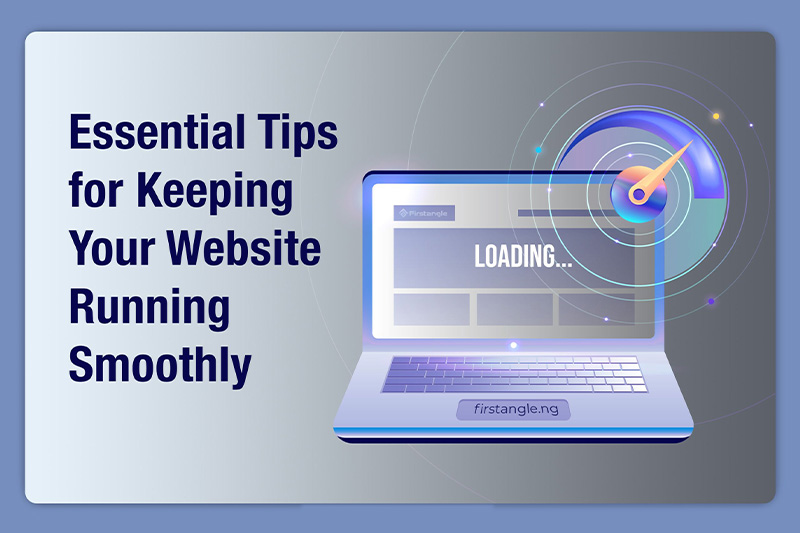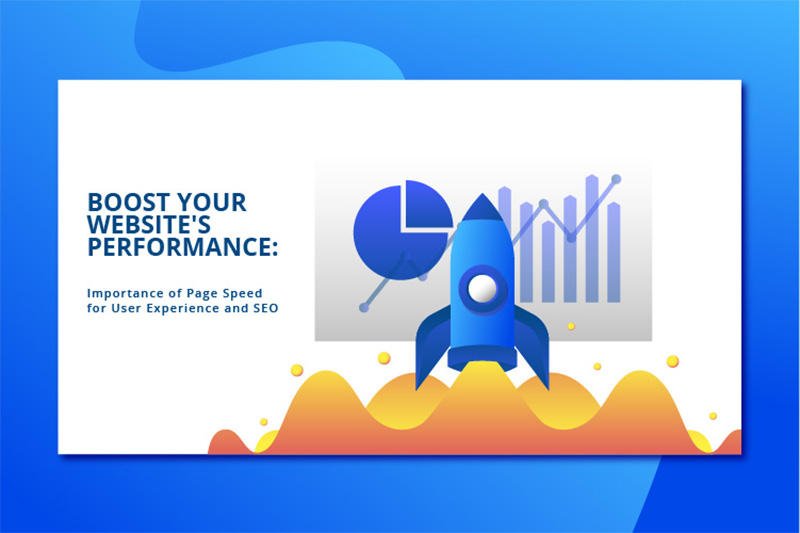Essential Tips for Keeping Your Website Running Smoothly

Maintaining a website isn’t just about launching it and forgetting it. Regular upkeep is essential to ensure its smooth operation, optimal performance, and security. In this blog post, we’ll explore some indispensable tips for keeping your website running smoothly. 1. Regularly Update Software and Plugins: Outdated software and plugins are one of the leading causes of security vulnerabilities and performance issues. Make it a habit to regularly update your website’s content management system (CMS), plugins, and themes to the latest versions. This helps patch any security flaws, improve functionality, and ensure compatibility with the latest web standards. 2. Monitor Website Performance and Loading Speed: Site speed is crucial for user experience and search engine rankings. Utilize tools like Google PageSpeed Insights or GTmetrix to regularly monitor your website’s performance and loading speed. Address any issues identified, such as large image files, excessive HTTP requests, or server bottlenecks, to ensure optimal loading times. 3. Backup Your Website Regularly: Data loss can occur due to various reasons, including hacking, server failures, or human error. Implement a robust backup strategy to regularly back up your website files and databases. Store backups in secure off-site locations or utilize cloud-based backup solutions for added redundancy. 4. Secure Your Website with SSL Certificate: Protect your website and users’ data by securing it with an SSL (Secure Sockets Layer) certificate. SSL encryption encrypts data transmitted between the user’s browser and your website, preventing unauthorized access or tampering. Regularly confirm that your current SSL hasn’t expired. Additionally, Google prioritizes HTTPS websites in search results, enhancing your site’s visibility and trustworthiness. 5. Optimize Images and Content for Faster Loading Times: Large image files and bloated content can significantly slow down your website. Optimize images by compressing them without compromising quality (there are a lot of free online tools that can help you achieve this) and minify CSS, JavaScript, and HTML files to reduce file sizes. Additionally, utilize lazy loading techniques to defer off-screen images, improving initial page load times. 6. Check for Broken Links and Fix Them Promptly: Broken links not only frustrate visitors but also negatively impact your website’s SEO. Regularly scan your website for broken links using tools like Screaming Frog or Google Search Console. Once identified, promptly fix or redirect broken links to relevant pages to maintain a seamless user experience and preserve SEO authority. 7. Implement Security Measures to Prevent Hacking Attempts: Cybersecurity threats are on the rise, making website security a top priority. Implement robust security measures such as firewalls, malware scanners, and intrusion detection systems to protect your website from hacking attempts, malware infections, and DDoS attacks. Additionally, enforce strong password policies and limit access to sensitive areas of your website. 8. Seek Professional Help for Technical Issues or Updates: While DIY maintenance is commendable, some tasks require expertise and experience. Don’t hesitate to seek professional help for technical issues, complex updates, or troubleshooting. Web developers, system administrators, and SEO experts can provide valuable insights and support to keep your website running smoothly and this is our specialty at Firstangle Conclusion: Regular website maintenance is not just a good practice; it’s essential for the success of your online presence. By following these essential tips, you can ensure your website remains secure, performs optimally, and provides a seamless experience for your visitors. Invest time and effort into maintaining your website, and it will repay you with increased traffic, engagement, and conversions. Get in touch with us today if you need help creating or managing your website.
Importance of Website Page Speed for User Experience and SEO

In today’s digital landscape, where attention spans are shorter than ever, the speed at which a website loads can make or break user engagement and search engine visibility. Page speed, often overlooked in the grand scheme of website optimization, holds immense significance for both user experience (UX) and search engine optimization (SEO). In this blog post, we’ll delve into the importance of page speed and explore how it impacts both user satisfaction and SEO rankings. What is Page Speed? Page speed refers to the time it takes for a webpage to fully load its content, including text, images, scripts, and other elements. It is typically measured in seconds and plays a critical role in shaping user perceptions of a website’s performance. Page speed encompasses various metrics, including time to first byte (TTFB), first contentful paint (FCP), and time to interactive (TTI), each providing insights into different aspects of loading times. Impact on User Experience The significance of page speed in shaping user experience cannot be overstated. Studies have consistently shown that users expect websites to load quickly, with any delays leading to frustration and abandonment. A slow-loading website not only hampers user satisfaction but also increases bounce rates, as impatient visitors are quick to seek alternatives. In today’s fast-paced digital environment, where consumers have countless options at their fingertips, a seamless and rapid browsing experience is paramount to retaining audience engagement and loyalty. Impact on SEO Rankings In addition to its influence on user experience, page speed is a crucial factor in determining a website’s search engine rankings. Search engines like Google prioritize user-centric metrics, including page speed, when ranking websites in search results. Google’s algorithm considers page speed as a ranking factor, with faster-loading pages often receiving preferential treatment in search results. By prioritizing page speed optimization, website owners can improve their chances of ranking higher in search engine results pages (SERPs) and driving organic traffic to their sites. Factors Affecting Page Speed Several factors contribute to the speed at which a webpage loads, including: Tools to Measure Page Speed Several tools are available to measure and analyze page speed performance, including: Strategies to Improve Page Speed Optimizing page speed requires a multifaceted approach, incorporating various strategies such as: Case Studies of Successful Optimization Efforts Several businesses have successfully optimized their page speed, resulting in tangible improvements in user experience and SEO rankings. For example, a leading e-commerce retailer implemented image compression and browser caching, resulting in a 30% reduction in page load times and a 15% increase in conversions. Similarly, a news website improved its page speed by leveraging a CDN, leading to a 20% increase in organic traffic and a 10% boost in ad revenue. Conclusion: Prioritize Page Speed for Better UX and SEO Search engine rankings and user experience are significantly influenced by page speed. Website owners may increase customer happiness, lower bounce rates, and increase their chances of ranking better in search results by giving page speed optimization top priority. The rising need for rapid satisfaction and the widespread use of mobile devices make investment in page speed optimization essential for success in today’s digital environment. So, boost the functionality of your website and see how it helps you become more visible and successful online.

